- S.D. Eibar ready for maiden La Liga outing
- SD Eibar stengthen ahead of debut La Liga season
- Can ‘Super Mario’ live up to expectations in Madrid?
- MAN IN THE GROUND – Brentford 0 – 4 Osasuna
- Historic Basque derby welcomes S.D. Eibar to La Liga
- Munich to Madrid, via Brazil – Tony Kroos
- Rakitic in Spanish Switch
- Can Spain find redemption in Rio?
- Viva Espana! A season of redemption for Spanish football
- From the old to the new: who can fill the void in years to come for La Roja?
Spain’s Stadium of Pneumonia
- Updated: 18 May, 2012
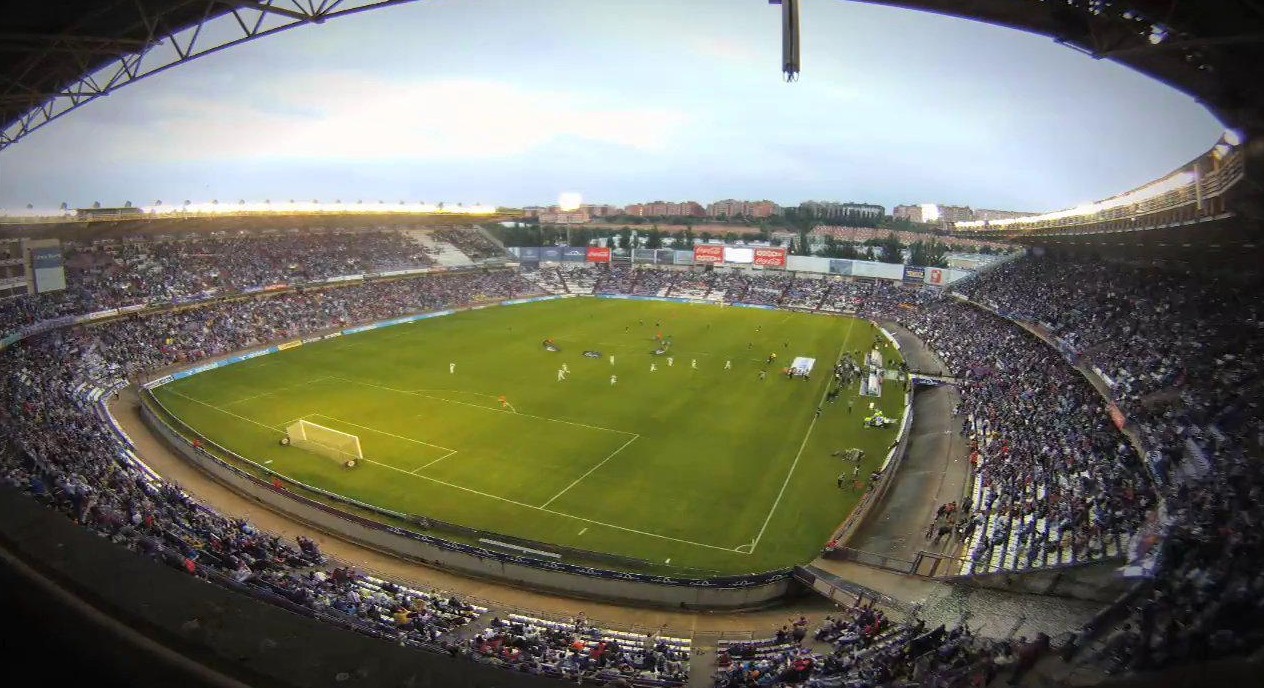
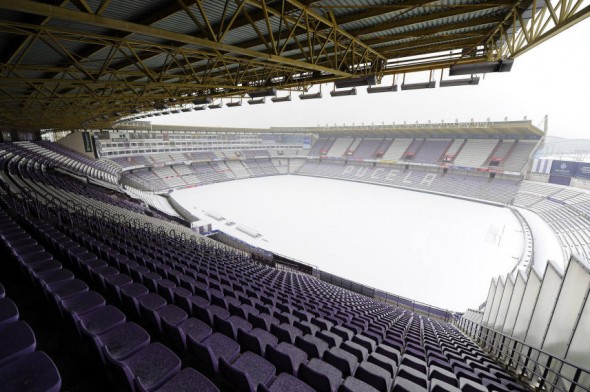
Allow me to introduce you to something of a rarity. You see back in the late 1970’s, when football was pre-occupied with short shorts and tight perms, the stadium architects of Spain were under occupied. Between 1974 & 1988, only one new major stadium was built in Spain, a curious fact when you consider that slap bang in the middle of this period, the country hosted the World Cup. Nevertheless, the one new stadium to emerge was a beauty, so if you’re sitting comfortably, I’ll begin.
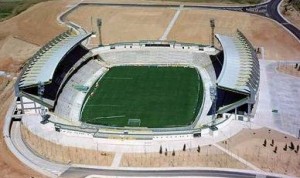 In the late 1970’s Gonzalo Alonso was president of Real Valladolid and he had an eye for an opportunity. With his beloved club on the verge of returning to La Primera after a sixteen year absence and the World Cup coming to Spain, Alonso set about lobbying both the Spanish Football Federation and the local municipality. First up, he wanted Valladolid to be a host at Mundial 82. Next, with no realistic chance of redeveloping their antiquated Estadio José Zorrilla, Alonso wanted a new stadium. Well thanks to his persuasive manner and commitment, Valladolid did host three matches in the 1982 World Cup in the only purpose built stadium at that year’s finals.
In the late 1970’s Gonzalo Alonso was president of Real Valladolid and he had an eye for an opportunity. With his beloved club on the verge of returning to La Primera after a sixteen year absence and the World Cup coming to Spain, Alonso set about lobbying both the Spanish Football Federation and the local municipality. First up, he wanted Valladolid to be a host at Mundial 82. Next, with no realistic chance of redeveloping their antiquated Estadio José Zorrilla, Alonso wanted a new stadium. Well thanks to his persuasive manner and commitment, Valladolid did host three matches in the 1982 World Cup in the only purpose built stadium at that year’s finals.
The municipality identified land to the west of the city, around 2km from their existing stadium. A budget of 700 million pesetas was agreed, with significant grants coming from the National Sports Council and the Spanish FA. Work began in November 1980 and little over a year later on 20 February 1982, Valladolid played host to Athletic Bilbao in a league match that they won 1-0. It also had the honour of hosting the final of the Copa del Rey in April of that year before France, Czechoslovakia and Kuwait rolled into town for the Mundial.. At the time of the World Cup, the stadium consisted of a single open tier that curved around the pitch, with two identical covered stands on the east and west sides. The capacity for the World Cup matches was 29,990 and the three matches attracted good crowds.
Standing at over 700 metres above sea level on an exposed plain, the stadium earned the nickmane El Estadio de la Pulmonia – the stadium of pneumonia. The two stands acted like a wind tunnel, so in 1984, the two side cantilevered roofs were continued round to the north side to form a horseshoe.
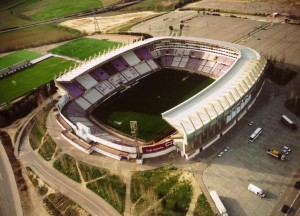 Rather than continue the seating, three tiers of private boxes, 120 in total, were built with a row of seats at their base. This enclosed the arena, but the wind still had a trick up its sleeve. On 25 July 1986 an 80 kph gust lifted the new roof off of its frame and dropped it in the car park behind the stand. The replacement is built of sterner stuff and has been designed to withstand winds of up to 150 kph. Even a Castilian winter doesn’t get that severe. With the additional stand and the reduced media seating, the capacity rose to 37,500 (26,500 seated).
Rather than continue the seating, three tiers of private boxes, 120 in total, were built with a row of seats at their base. This enclosed the arena, but the wind still had a trick up its sleeve. On 25 July 1986 an 80 kph gust lifted the new roof off of its frame and dropped it in the car park behind the stand. The replacement is built of sterner stuff and has been designed to withstand winds of up to 150 kph. Even a Castilian winter doesn’t get that severe. With the additional stand and the reduced media seating, the capacity rose to 37,500 (26,500 seated).
Structurally, little has changed at Estadio Nuevo José Zorrilla since the roof blew off, or rather the new roof went on in 1986. The stadium was converted to an all seater arena in 1995 and the capacity dropped to the current level of 26,512. La Selección first played at the stadium on 11 March 1992, when 30,000 turned up to see a 2-0 victory over the USA. They returned in 1997 & 2006 for full houses in matches against Czech Republic and Ivory Coast. Today, the stadium is a bright arena, modern in design if not infrastructure. Its horseshoe layout reminds me of a mini version of the old Cardiff Arms Park and its banks of purple and white seats genuinely add character to the stadium. (Why do so many clubs go for neutral colours?) From a design perspective, whilst there is nothing radical, architect Ricardo Soria got the fundamentals absolutely spot on.
There is not a bad seat in the house, the pitch is raised to allow drainage into the surrounding moat and even a medium sized crowd generates a great atmosphere. Behind the main west stand is Real Valladolid’s training ground where the B team play their matches in front of a few hundred fans perched on a Toblerone shaped stand (It’s a missed advertising opportunity in my book!). However not for much longer as plans are afoot to redevelop the stadium and the surrounding area.
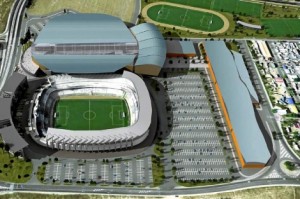 The Valladolid Arena was originally conceived as part of Spain’s failed 2018 World Cup bid, but the municipality has pressed on with plans for the redevelopment of the stadium and area immediately around it. The principle changes will see the demolition of the private boxes at the north end of the ground and a single bank of seating built in its place.
The Valladolid Arena was originally conceived as part of Spain’s failed 2018 World Cup bid, but the municipality has pressed on with plans for the redevelopment of the stadium and area immediately around it. The principle changes will see the demolition of the private boxes at the north end of the ground and a single bank of seating built in its place.
Private boxes will then be built at the southern end, enclosing the stadium for the first time. Finally, the pitch will be lowered and an extra ring of seating installed. As a result, the capacity will increase to 40,000. A 12,000 seat indoor arena will be built on the clubs current training facilities, which in turn will be relocated to the north west of the site. There is a fly in the ointment however, as in November 2011, the Superior Court of Justice ruled that the site could not include a shopping mall, which was a fundamental element of the funding of the project.
If the project does get the go ahead, the club and the city of Valladolid will have one of the most advanced sports/leisure complexes in the whole of Spain. All the more reason why Real Valladolid needs to get back to La Primera
Follow @icentrocampista


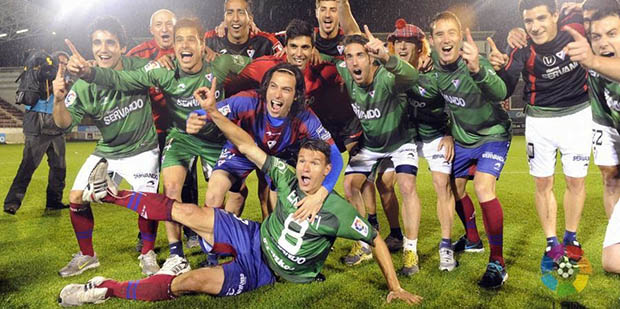
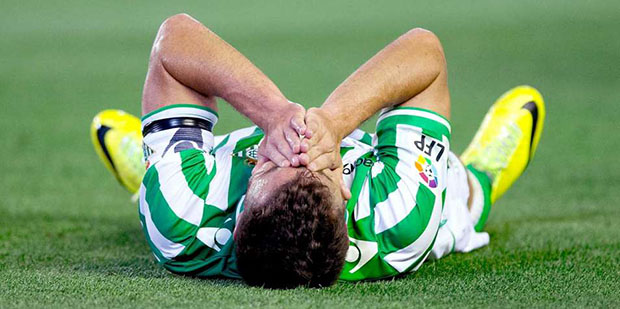


One Comment
You must be logged in to post a comment Login